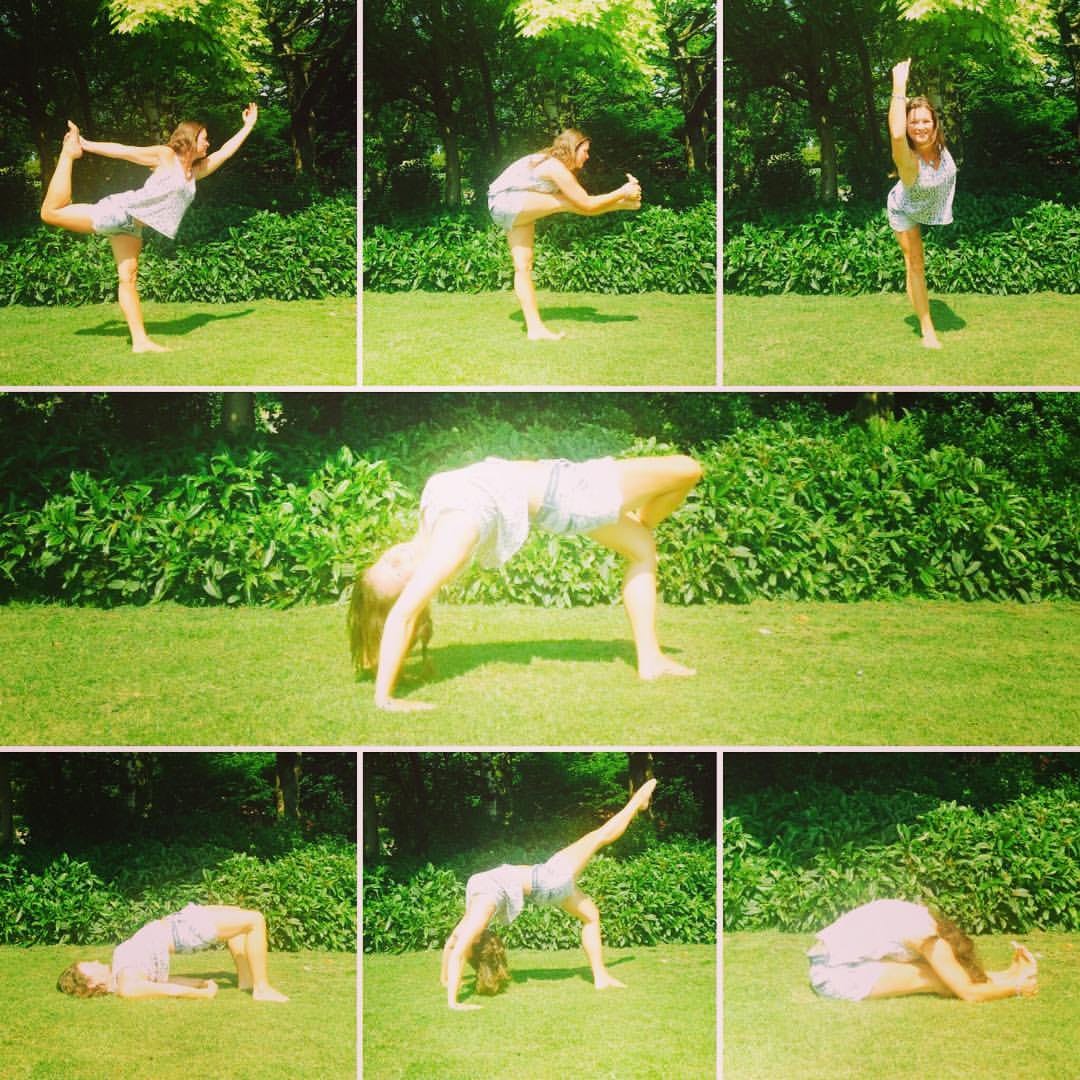Balance Your Energy: A Mindful Practice for Inner Peace & Harmony
Heal your body & empower your mind with the third and fourth limbs of yoga: Asana and Pranayama.
Yoga is so much more than physical poses; it is a holistic practice that nurtures the mind, body, and spirit and offers profound healing on all levels.
Last week, we delved into the first two limbs of yoga, which serve as the foundation for a harmonious and fulfilling life: the Blueprints of the New Earth.
Today, we will explore limbs three and four of Patanjali’s yoga sutras: asana (physical postures) and pranayama (breath control), essential tools for creating balance and harmony within.
I’ve been practicing yoga for 25 years, but it wasn’t until I committed to daily practice on January 1, 2011 (11:11), that I experienced its true healing power.
By committing to this lifestyle, I overcame seven years of chronic back pain and found my true life’s purpose. You can read my full story here:
After overcoming chronic back pain with yoga, nutrition, and a positive mindset, I wrote my first book, Yoga & Ayurveda: Natural Remedies for Back Pain, to help others who, like me, were told they’d be in pain forever.
If I can do it, anyone can.
Asana: The Physical Postures
Asana, the third limb of yoga, consists of physical postures designed to develop strength, flexibility, and balance. While modern yoga emphasises the physical aspects, the original purpose of asana was to condition the body for extended meditation by enhancing endurance and comfort.
Regular practice enhances energy, confidence, and overall well-being, helping you tune into your body’s signals and elevate your consciousness.
Yoga’s profound benefits extend beyond the mat, enriching your physical, mental, emotional, and spiritual life.
Physical Benefits of Yoga Asana
Yoga asana is a powerful tool for improving overall physical health and well-being. Physical benefits include:
Enhances Energy Flow: Yoga asana clears energy pathways in the body, allowing prana to flow freely and improving overall health.
Improves Posture: Yoga encourages body awareness, strengthening the spine, and improving posture.
Alleviates Back Pain: Increases flexibility and strength and promotes relaxation to relieve tension and inflammation.
Boosts Circulation: Yoga improves blood flow, aiding in oxygen delivery to cells.
Increases Flexibility: Regular practice helps lengthen muscles, improve range of motion, and prevent injuries.
Enhances Strength: Different poses activate various muscle groups, building core strength and stability.
Supports Joint Health: Gentle stretching and movement keep joints lubricated and prevent stiffness.
Balance and Coordination: Balancing postures builds core strength and stability, reducing the risk of falls and injuries.
Mental Benefits of Yoga Asana
Yoga asanas cultivate discipline and the ability to concentrate, preparing the body for meditation. Mental benefits include:
Focus and Concentration: Practicing mindfulness through yoga helps train the mind to stay present and attentive, improving focus and concentration.
Boosts Mental Clarity: Yoga asanas clear the mind, enhance concentration and focus, and promote relaxation.
Enhances Cognitive Function: Yoga stimulates brain activity, improving memory, problem-solving skills, and decision-making.
Reduces Stress: Yoga stimulates the parasympathetic nervous system, which helps promote relaxation and alleviate stress.
Relieves Anxiety and Depression: Yoga asana and pranayama promote relaxation, reduce stress, anxiety and depression, and balance the body's energy.
Better Sleep Quality: Regular practice reduces insomnia and promotes deeper, more restful sleep.
Emotional Benefits of Yoga Asana
Yoga creates a safe space to explore emotions, release negativity, and cultivate inner peace. Emotional benefits include:
Self-Awareness: Yoga encourages introspection and helps us cultivate self-awareness and understand our feelings more deeply.
Emotional Stability: Regular practice balances mood swings and fosters resilience when facing challenges.
Self-Esteem and Confidence: Mastering poses and overcoming limitations build self-confidence and self-worth.
Emotional Release: Certain poses help release stored emotions, leading to healing and emotional clarity.
Positivity and Joy: The combination of movement, breath, and mindfulness elevates mood, positivity and joy, enhancing overall well-being.
Spiritual Benefits of Yoga Asana
Yoga is deeply rooted in spirituality, offering a path to self-discovery and connection to a higher consciousness. Spiritual benefits include:
Mindfulness and Presence: Yoga teaches us to live in the present moment, cultivating greater awareness and inner peace.
Connection to the Self: The practice helps us align with our inner truth and purpose, deepening our divine connection to self and the universe.
Gratitude and Compassion: Yoga nurtures an attitude of gratitude, kindness, and empathy toward oneself and others.
Enhances Energy Flow: The practice aligns the chakras (energy centres), promoting balance and vitality.
Inner Peace: Yoga encourages surrender, acceptance, and a deep sense of tranquillity that extends beyond the mat.
Regular practice of asanas aligns the physical and subtle energy bodies, paving the way for deeper spiritual exploration.
Pranayama: Breath Control
Pranayama, the fourth limb of yoga, is the art of breath control to regulate the body’s energy and emotions. It encompasses various techniques for harmonising and balancing physical and mental states. It’s often practised in conjunction with asanas and meditation to achieve a deeper state of tranquillity and mindfulness.
Benefits of Pranayama
Like asanas, pranayama offers numerous physical, mental, and emotional benefits.
Pranayama cultivates balance within the body and mind, increasing energy levels and aiding in relaxation. By regulating the breath, pranayama enhances lung capacity, improves oxygenation, and supports overall respiratory health. It also calms the nervous system, reduces stress and anxiety, and promotes mental clarity and focus.
Asana and pranayama complement each other, enhancing mindfulness and preparing the body and mind for meditation.
Prana and the Three Main Nadis
Prana is the vital life force that sustains all living beings. It flows through the body’s energy channels (nadis) and governs physical, mental, and spiritual well-being.
We have 72,000 nadis in our bodies, which transport prana to every organism.
The three main nadis are ida (lunar, feminine energy), pingala (solar, masculine energy) and sushumna (central channel). These energies move up and down the spinal column, balancing and energising each chakra.
The three main nadis:
Ida Nadi: Associated with the moon, it governs calmness, intuition, and the parasympathetic nervous system, influencing the right brain and left side of the body to enhance cool, compassionate energy.
Pingala Nadi: Associated with the sun, it governs activity, energy, and the sympathetic nervous system, influencing the left brain and right side of the body to enhance hot, dynamic energy.
Sushumna Nadi: The central channel runs from the base of the spine to the crown of the head, enabling spiritual awakening and immense healing potential when prana flows freely.
Pranayama purifies the nadis to clear blockages and revitalise our energy, promoting physical, mental, and emotional harmony.
When our energy pathways become blocked, the natural flow of prana is disrupted, leading to physical illness and emotional imbalance. Negative thoughts and feelings consume a significant amount of energy, leaving us feeling exhausted, drained, and more vulnerable to stress, anxiety, and depression. Over time, this energy depletion weakens the body’s ability to heal, affecting overall well-being.
Pranayama helps to clear the mind of negativity, increases prana, and teaches us how to control the mind by controlling the breath.
Some of my favourite pranayama practices are Nadi Shodhana (alternate nostril breathing), Kapalbhati (skull shining breath), and Ujjayi (ocean breath).
Many struggle with pranayama because they breathe shallowly into the chest instead of the abdomen. With practice, proper breathing can enhance overall well-being.
The first four limbs of yoga refine our personality and allow us to gain mastery over the body. They prepare us for the second half of the yoga journey, which deals with the mind and senses and attaining a higher state of consciousness.
Deepen Your Practice with Chakra Yoga & Journaling
Understanding Asana and Pranayama is just the beginning. A structured, in-depth practice is essential to truly awaken your inner energy and align your chakras.
My Chakra Yoga & Journaling Course is designed to guide you through powerful techniques that integrate breathwork, movement, and meditation to unlock your full potential.
By upgrading to a paid membership, you will gain access to:
Expert-led chakra yoga classes
Asana and pranayama practices
Mantra and mudra meditations
Personalised guidance for spiritual growth
Rainbow Warriors chakra journal for reflection and expression
Exclusive resources and a supportive community
Take the next step in your yoga journey—upgrade today and embark on a transformational experience toward balance, vitality, and inner peace.
The Chakra Yoga & Journaling Course is the perfect foundation for cultivating a magical morning practice that will set the tone for your day.
Energise your mornings with 30-minute chakra yoga, igniting your inner magic. Unwind at night with soothing meditations for deep, restful sleep.
This course usually costs £111, but you can get it for free when you join our Inner Circle.
Upgrade today for just £7 and get instant access to the Chakra Yoga & Journaling Course.
Our Inner Circle can look forward to a Full Moon Beyond Lemuria Angel Reading later today! I can’t wait to share this with you!










Great piece thank you for sharing